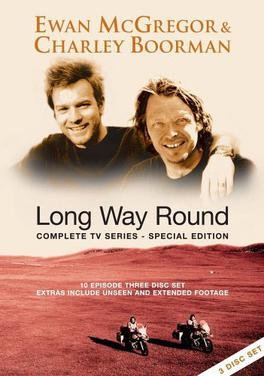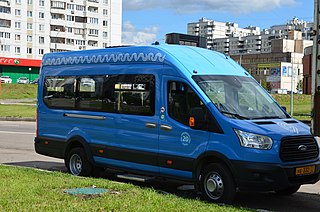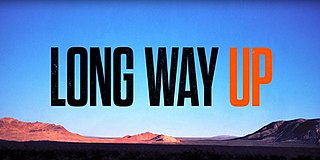
Hong Kong has a highly developed transport network, encompassing both public and private transport. Based on Hong Kong Government's Travel Characteristics Survey, over 90% of daily journeys are on public transport, the highest rate in the world. However, in 2014 the Transport Advisory Committee, which advises the Government on transportation issues, issued a report on the much-worsened congestion problem in Hong Kong and pointed at the excessive growth of private cars during the past 10–15 years.

Transport in Thailand is varied, with no one dominant means of transport. For long-distance travel, bus transport dominates. Low-speed rail travel has long been a rural long-distance transport mechanism, though plans are underway to expand services with high-speed rail lines extending to several major regions of Thailand. Road transportation is the primary form of freight transport across the country.

Barbados is a relatively small country with a length of 21 miles (34 km) and a width of 14 miles (23 km). Barbados has 1,600 kilometres (990 mi) of public paved roads, two active marine ports in, remnants of a railway system, and one airport; the Sir Grantley Adams International Airport, located in Christ Church.

Bride's Pool is a small river in the northeastern New Territories, Hong Kong near Tai Mei Tuk. The river is characterized by a string of waterfalls with plunge pools. Mirror Pool is also located nearby.

Intermodal passenger transport, also called mixed-mode commuting, involves using two or more modes of transportation in a journey. Mixed-mode commuting is often used to combine the strengths of various transportation options. A major goal of modern intermodal passenger transport is to reduce dependence on the automobile as the major mode of ground transportation and increase use of public transport. To assist the traveller, various intermodal journey planners such as Rome2rio and Google Transit have been devised to help travellers plan and schedule their journey.

Long Way Round (LWR) is a British television series and book documenting the 19,000-mile (31,000 km) journey of Ewan McGregor and Charley Boorman from London to New York City on motorcycles. They travelled eastwards through Europe and Asia, flew to Alaska, and continued by road to New York. The series aired on Sky One from 18 October 2004 – 1 February 2005 and was repeated on BBC Two in 2008. The series was added to Apple TV+ on 18 September 2020, along with sequels Long Way Down (2007) and Long Way Up (2020).

Marshrutnoye taksi, commonly known by the colloquialism Marshrutka, are share taxis found in Eastern Europe and the republics of the former Soviet Union. Usually vans, they drive along set routes, depart only when all seats are filled, and may have higher fares than buses. Passengers can board a marshrutka anywhere along its route if there are seats available.

Charley Boorman is a British television presenter, travel writer and actor. A motorbike enthusiast, Boorman has made three long-distance motorcycle rides with his friend Ewan McGregor, documented in Long Way Round (2004), Long Way Down (2007), and Long Way Up (2020).

Land's End to John o' Groats is the traversal of the length of the island of Great Britain between two extremities, in the southwest and northeast. The traditional distance by road is 874 miles (1,407 km) and takes most cyclists 10 to 14 days; the record for running the route is nine days. Off-road walkers typically walk about 1,200 miles (1,900 km) and take two or three months for the expedition. Signposts indicate the traditional distance at each end.
Claudio von Planta is a Swiss cameraman, director and filmmaker, based in London.
Bus services in Hong Kong have a long history. As of 2023, four companies operate franchised public bus services. There are also a variety of non-franchised public bus services, including feeder bus services to railway stations operated by MTR, and residents' services for residential estates.

Race to Dakar is a documentary series following actor and keen motorcyclist Charley Boorman's entry into the 2006 Dakar Rally from Lisbon to Dakar. First aired on Sky Two and ABC Television (Australia) during 2006, it was also released as a book.

Long Way Down is a television series and book documenting a motorcycle journey undertaken in 2007 by Ewan McGregor and Charley Boorman, from John o' Groats in Scotland through eighteen countries in Europe and Africa to Cape Town in South Africa. It is a follow-up to the Long Way Round of 2004, when the pair rode east from London to New York via Eurasia and North America.
In Top Gear, a BBC motoring show, one of the show's regular features since 2002 is various forms of racing the presenters undertake, either against each other or against invited guests. The show has featured a number of epic races, where one of the presenters — Jeremy Clarkson, Richard Hammond, James May, and occasionally The Stig — drives a car in a race against the others in another form of transport. These races typically involve Clarkson driving the car while Hammond and May take the same journey by combinations of plane, train, or ferry. May has said that the races are planned to be as close as possible. Of the long-distance races so far, the car has won the vast majority of the races, with the exceptions of the cross-London epic, in which the car was beaten by a bicycle, a boat on the Thames and public transport; Ferrari Daytona vs. Powerboat, in which the boat won; Shelby Mustang GT500 vs. High Speed Train, in which the train won; and the Arabian Peninsula race, in which the alternative 'money no-object' transportation options beat the Bugatti Chiron.

Long Way Up is a British television series which debuted on 18 September 2020, documenting a motorcycle journey undertaken in 2019 by Ewan McGregor and Charley Boorman, from Ushuaia in Argentina through South and Central America to Los Angeles in the United States. It is a follow-up to 2004's Long Way Round where the pair rode from London to New York, and to 2007's Long Way Down, when they rode from John o' Groats in Scotland to Cape Town in South Africa.
The city of Phnom Penh is served by multiple transport systems including public buses, private taxis and ride-hailing via mobile apps.

The first series of Race Across the World first aired on BBC Two from 3 March to 7 April 2019. Five pairs of racers travelled from London to Singapore, with the contestants each given £1,329 for the whole race without using air transport. The racers travelled over a distance of 12,000 miles in 50 days.

Numerous United Kingdom–India bus routes ran from the 1950s to the 1970s. The first of these was "The Indiaman", a service from London to Calcutta that was inaugurated on 15 April 1957. At least 32 other operators ran services, including Albert Travel which ran 15 round journeys from London to India. Overland routes were made difficult by political unrest in the Middle East during the 1970s and ended with the 1979 Iranian Revolution and Soviet–Afghan War. The Albert bus was refurbished from 2009 and made a one-off return trip from the UK to Australia in 2012. No new bus journeys between the two countries are currently planned.

The third series of Race Across the World began airing on 22 March 2023. Unlike the transcontinental races in previous series, the race took place entirely in Canada between Vancouver, British Columbia and St. John's, Newfoundland and Labrador. Each two-person team was required to cross the country on a 16,000-kilometre (9,900 mi) route without using air travel, and was given a budget equal to the cost of the air fare. Contestants were provided a map, GPS tracker, travel guide, and bear spray.

The fourth series of Race Across the World began airing on 10 April 2024. Each two-person team was required to complete the 15,000 kilometres (9,300 mi) route from Japan to Indonesia without using air travel, and was given a budget equal to the cost of the air fare. Contestants were provided with only a map, travel guide and GPS tracker.




















